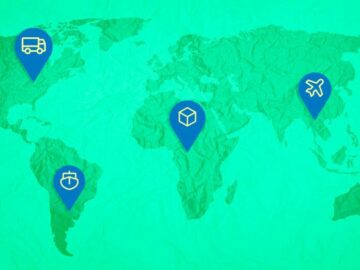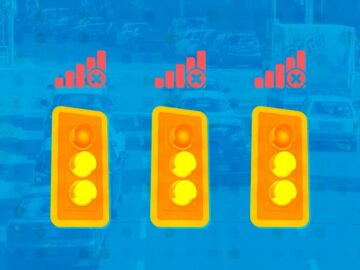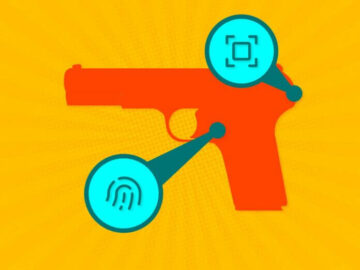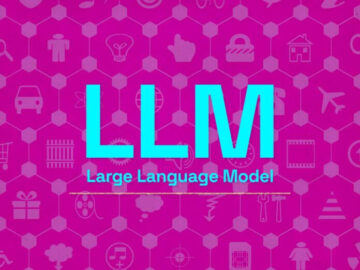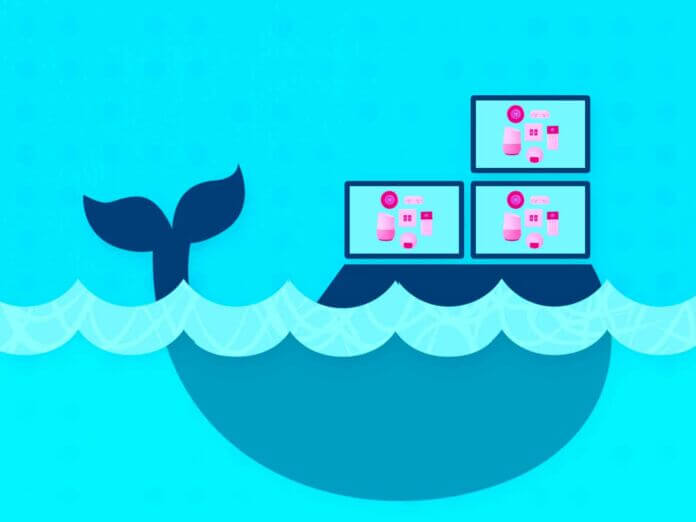
As the hardware of connected devices becomes more capable and affordable, the complexity of IoT applications increases. Docker, a popular containerization platform, can help simplify and streamline the process, making it easier for developers to create and maintain IoT applications.
Let’s explore some advantages that Docker brings to IoT development and challenges to consider when deploying and maintaining them.
Advantages of Docker
#1: Lightweight & Scalable
Docker containers are lightweight, as they share the host operating system and resources, making them ideal for IoT applications where resources may be limited.
This lightweight nature also allows for easy scaling, as developers can quickly deploy multiple instances of an application without consuming significant system resources.
#2: Simplified Development & Deployment
With Docker, developers can create a consistent environment across the entire application lifecycle, from development to production. By packaging the application and its dependencies into a single container, developers can ensure that the application will run consistently regardless of the underlying infrastructure.
This simplifies the development process and eliminates the “it works on my machine” issue, making it easier to deploy and manage IoT applications.
#3: Docker Security
Docker enables developers to isolate applications and their dependencies in containers, reducing the attack surface and enhancing security. By running each application in its container, developers can limit the potential impact of security vulnerabilities and maintain better control over the application’s environment.
Potential Vulnerabilities
Since the application is self-contained, the ability to intelligently analyze potential vulnerabilities within the context of the application is improved through contextual analysis. Taking the context into consideration helps alleviate false positives that simplistic security scanners tend to show.
As discussed in this 2023 research report, the majority of CVEs aren’t as severe as their public severity rating. By intelligently scanning in the context of the application, developers can be more productive by working on relevant potential vulnerabilities.
Easier Versioning & Rollbacks
Containers inherently make versioning and rollback more manageable by allowing developers to create new containers for each application update. If a problem arises, or new features are added, a new version can be pushed out the update of the previous release.
Because IoT devices may be deployed in challenging network environments, the update itself could be interrupted and fail. It’s useful to be able to automatically roll back to the previous version if the update fails, which could leave the device in a non-working state.
The ability to have automatic rollback capabilities is available when using JFrog Connect as the platform to manage the device updates.
Enhanced Collaboration
Docker makes it easier for developers to collaborate on IoT projects by providing a consistent environment that can be shared across team members.
Developers can quickly spin up containers with the required dependencies, making it easier to share with other team members for testing and further development.
Docker & IoT in a DevOps Environment
Docker is simply another artifact to be managed in a DevOps environment. As such, Docker benefits from process automation for building, testing, and security and compliance checks, which are established best practices in modern DevOps.
Challenges of Docker in IoT
Docker was originally designed with servers and data centers in mind, but its advantages of simplicity, portability, and relatively low overhead have made it a popular choice for IoT applications. That being said, IoT devices have their challenges to consider.
#1: Scalability
Deploying and updating Docker application images to a small number of devices is straightforward. However, managing deployments across hundreds or thousands of devices poses challenges. One option is to develop custom scripts, but this entails ongoing maintenance, testing, and updates.
Alternatively, investing in an IoT management platform offers full control while automating the process. Such a platform streamlines deployments and updates and provides additional features like device monitoring, automated alerts, secure remote access, device management, and significant time savings.
#2: Size
While Docker is known for being a lightweight container, you still have to consider the application image, which can affect the overhead from Docker. If you’re targeting Linux on relatively inexpensive hardware like Raspberry Pi, you probably have more than enough power for most use cases.
#3: Network Bandwidth & Availability
IoT devices can be distributed far and wide with varying levels of network connectivity. Network access can be challenging. Networks may be slow or intermittent.
Devices will be deployed behind firewalls with no public IP address to target. You’ll need to find the device, create a secure connection, and make sure the update works accordingly. And you need to do that to the entire fleet of devices.
In the event of a network interruption that causes an update failure, a proper IoT platform can automatically roll back to the previous instance so that the device isn’t left in a non-functional state between updates.
That’s what happened to Roomba not so long ago when their update to their Roomba vacuums didn’t go as planned.
#4: Security
Security is usually an afterthought. Is checking for a CVE related to Docker top of mind for every developer? Probably not.
They’re working on app features, not checking for the latest vulnerabilities. That’s why it’s useful to have a built-in background process that checks for potential vulnerabilities from the CVE database while they’re coding.
Better yet, you can perform contextual analysis to mute the burden of having too many false positives that aren’t relevant.
Proven & Efficient Solution
Docker offers a proven, efficient solution for packaging and deploying IoT applications. By leveraging Docker for IoT, you can streamline the development process, improve security, and readily scale your applications.
With the growing demand for IoT solutions, adopting Docker to deploy IoT applications to devices will simplify the development process. Implement Docker for IoT apps into your DevOps workflows, add automated security, and you’ve got IoT development with the reliability, security, and agility of modern DevOps best practices.
- SEO Powered Content & PR Distribution. Get Amplified Today.
- PlatoData.Network Vertical Generative Ai. Empower Yourself. Access Here.
- PlatoAiStream. Web3 Intelligence. Knowledge Amplified. Access Here.
- PlatoESG. Carbon, CleanTech, Energy, Environment, Solar, Waste Management. Access Here.
- PlatoHealth. Biotech and Clinical Trials Intelligence. Access Here.
- Source: https://www.iotforall.com/empowering-iot-with-docker
- :is
- :not
- :where
- $UP
- 1
- a
- ability
- Able
- access
- accordingly
- across
- add
- added
- Additional
- address
- Adopting
- advantages
- affect
- affordable
- ago
- Alerts
- alleviate
- Allowing
- allows
- also
- an
- analysis
- analyze
- and
- Another
- app
- Application
- applications
- apps
- ARE
- AS
- attack
- Automated
- Automatic
- automatically
- automating
- Automation
- available
- back
- background
- Bandwidth
- BE
- becomes
- behind
- being
- benefits
- BEST
- best practices
- Better
- between
- Brings
- Building
- built-in
- burden
- but
- by
- CAN
- capabilities
- capable
- cases
- causes
- Centers
- challenges
- challenging
- checking
- Checks
- choice
- Coding
- collaborate
- complexity
- compliance
- Connect
- connected
- connected devices
- connection
- Connectivity
- Consider
- consideration
- consistent
- consistently
- Container
- Containers
- context
- contextual
- control
- could
- create
- custom
- data
- data centers
- Demand
- dependencies
- deploy
- deployed
- deploying
- deployments
- designed
- develop
- Developer
- developers
- Development
- device
- Devices
- DevOps
- discussed
- distributed
- do
- Docker
- each
- easier
- easy
- efficient
- eliminates
- empowering
- enables
- enhancing
- enough
- ensure
- Entire
- Environment
- environments
- established
- Ether (ETH)
- Event
- Every
- explore
- FAIL
- fails
- Failure
- false
- far
- Features
- Find
- firewalls
- FLEET
- For
- from
- full
- further
- further development
- Go
- got
- Growing
- happened
- Hardware
- Have
- having
- help
- helps
- host
- However
- HTTPS
- Hundreds
- ideal
- if
- image
- images
- Impact
- implement
- improve
- improved
- in
- Increases
- inexpensive
- Infrastructure
- inherently
- instance
- instances
- interrupted
- into
- investing
- iot
- iot devices
- IP
- IP Address
- issue
- IT
- ITS
- itself
- jpg
- known
- latest
- Leave
- left
- levels
- leveraging
- lifecycle
- lightweight
- like
- LIMIT
- Limited
- linux
- Long
- Low
- made
- maintain
- maintaining
- maintenance
- Majority
- make
- MAKES
- Making
- manage
- manageable
- managed
- management
- managing
- many
- max-width
- May..
- Members
- mind
- Modern
- monitoring
- more
- most
- multiple
- my
- Nature
- Need
- network
- Network Access
- networks
- New
- New Features
- no
- number
- of
- Offers
- on
- ONE
- ongoing
- operating
- operating system
- Option
- or
- originally
- Other
- out
- over
- packaging
- perform
- platform
- plato
- Plato Data Intelligence
- PlatoData
- Popular
- portability
- poses
- potential
- power
- practices
- previous
- probably
- Problem
- process
- Process Automation
- Production
- productive
- projects
- proper
- proven
- provides
- providing
- public
- pushed
- quickly
- Raspberry
- Raspberry Pi
- rating
- readily
- reducing
- Regardless
- related
- relatively
- release
- relevant
- reliability
- remote
- remote access
- required
- research
- Resources
- Roll
- Roomba
- Run
- running
- Said
- Savings
- Scale
- scaling
- scanning
- scripts
- secure
- security
- Servers
- severe
- severity
- Share
- shared
- show
- significant
- simplicity
- simplified
- simplify
- simply
- single
- slow
- small
- So
- solution
- Solutions
- some
- Spin
- State
- Still
- straightforward
- streamline
- such
- sure
- Surface
- system
- taking
- Target
- targeting
- team
- Team members
- Testing
- than
- that
- The
- their
- Them
- they
- this
- thousands
- Through
- time
- to
- too
- top
- underlying
- Update
- Updates
- updating
- use
- useful
- using
- usually
- Vacuums
- varying
- version
- Vulnerabilities
- was
- What
- when
- which
- while
- why
- wide
- will
- with
- within
- without
- workflows
- working
- works
- yet
- you
- Your
- zephyrnet

